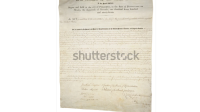Introduction: The Prohibition Era
The Prohibition Era, spanning from 1920 to 1933, was a significant period in American history marked by the nationwide constitutional ban on the production, importation, transportation, and sale of alcoholic beverages. This era brought about profound social, economic, and political changes, influencing the United States in ways that are still felt today. Understanding the context, events, and consequences of Prohibition is crucial for comprehending this transformative period.
Prohibition was not merely a legal mandate; it was a profound social experiment aimed at reshaping American society. The movement that led to Prohibition had its roots in the temperance crusades of the 19th century, which sought to curb the negative impacts of alcohol on families and communities. This era also intersected with significant historical events, including World War I and the Roaring Twenties, each contributing to the complex narrative of Prohibition.
The impact of the Prohibition Era extends beyond its legal and social ramifications. It influenced cultural expressions, from literature and music to the rise of underground clubs and speakeasies. The unintended consequences of Prohibition, including the rise of organized crime and widespread public disobedience, offer critical lessons about the challenges of legislating morality and controlling human behavior.
Read Also : The Gulf of Tonkin Incident (1964): Catalyst for the Vietnam War
The Background: Leading to Prohibition in America
To fully grasp the significance of the Prohibition Era, it is essential to explore the factors that led to its implementation. The movement for Prohibition was driven by a combination of social, moral, and political factors that culminated in the ratification of the Eighteenth Amendment.
The Temperance Movement: Roots of Prohibition in the United States
The Temperance Movement played a pivotal role in laying the groundwork for Prohibition. Emerging in the early 19th century, this movement advocated for the moderation or complete abstinence from alcoholic beverages. It was fueled by concerns over the social and moral implications of alcohol consumption, including crime, domestic violence, and poverty.
Prominent organizations such as the Women’s Christian Temperance Union (WCTU) and the Anti-Saloon League (ASL) were at the forefront of the Temperance Movement. These groups utilized grassroots organizing, lobbying, and persuasive campaigns to garner public support and influence policymakers. Their efforts were instrumental in shifting public opinion towards the need for stringent alcohol regulations.
The Temperance Movement was also deeply intertwined with other social reform movements of the time, such as women’s suffrage and labor rights. Advocates argued that alcohol consumption contributed to social ills that disproportionately affected women and children, and that banning alcohol would lead to a more moral and just society. This intersectionality helped to broaden the appeal of the movement and galvanize support across diverse segments of the population.
Social and Political Climate: Setting the Stage for Prohibition Laws
The early 20th century was a period of significant social and political change in the United States. The Progressive Era brought about reforms aimed at addressing social issues and improving public welfare. The rise of industrialization and urbanization also contributed to the changing dynamics of American society.
The Progressive Era, spanning from the 1890s to the 1920s, saw an influx of immigrants, rapid industrial growth, and increasing urbanization. These changes brought about new social challenges, including poverty, crime, and public health concerns. Progressive reformers sought to address these issues through a variety of measures, including labor laws, public health initiatives, and, importantly, the temperance movement.
The intersection of these social and political factors created an environment conducive to the implementation of Prohibition. The idea of banning alcohol was seen not only as a moral imperative but also as a means to curb social ills and promote public health. The momentum gained by the Temperance Movement, combined with the broader reformist ethos of the time, set the stage for the enactment of Prohibition.
The Eighteenth Amendment: The Constitutional Ban on Alcohol
The culmination of the Prohibition movement was the ratification of the Eighteenth Amendment to the United States Constitution. This amendment, along with the Volstead Act, laid the legal foundation for the enforcement of Prohibition.
Ratification and Implementation: Enforcing the Alcohol Ban
The Eighteenth Amendment was ratified on January 16, 1919, and went into effect on January 17, 1920. It prohibited the manufacture, sale, and transportation of intoxicating liquors within the United States and its territories. The Volstead Act, officially known as the National Prohibition Act, provided the legal framework for enforcing the amendment. It defined “intoxicating liquors” and outlined the penalties for violating Prohibition laws.
The ratification of the Eighteenth Amendment represented a significant victory for the Temperance Movement, but it also marked the beginning of a new set of challenges. Implementing Prohibition required a coordinated effort between federal, state, and local governments. New agencies, such as the Bureau of Prohibition, were established to oversee enforcement, but they were often underfunded and understaffed.
Enforcement of Prohibition proved to be a daunting task. The sheer scale of the illegal alcohol market, combined with widespread public resistance, made it difficult for law enforcement agencies to effectively control the situation. Many Americans continued to consume alcohol, often in clandestine settings, leading to the proliferation of speakeasies and bootlegging operations.
Public Reaction and Compliance: Mixed Responses to Prohibition
The initial public reaction to Prohibition was mixed. While some segments of society celebrated the ban as a victory for morality and social progress, others viewed it as an infringement on personal freedoms. The enforcement of Prohibition faced significant challenges, as compliance varied widely across different regions and communities.
In urban areas, where alcohol consumption was deeply ingrained in social life, resistance to Prohibition was particularly strong. Speakeasies—illegal bars and nightclubs—proliferated, and bootlegging—the illegal production and distribution of alcohol—became a widespread practice. Law enforcement agencies struggled to keep up with the scale of illegal activities, leading to widespread corruption and public disillusionment.
Rural areas, on the other hand, often showed higher levels of compliance, reflecting the strong influence of religious and moral values in these communities. However, even in rural areas, the enforcement of Prohibition laws was inconsistent, and illegal distilleries and moonshine production were common. The overall mixed response highlighted the deep divisions within American society regarding the issue of alcohol consumption.
Legal and Political Challenges: The Struggle to Maintain Prohibition
The legal and political challenges of maintaining Prohibition were significant. Courts were inundated with cases related to violations of the Volstead Act, and the judicial system struggled to keep up with the caseload. Additionally, Prohibition enforcement was plagued by corruption, as law enforcement officers and politicians were often bribed by bootleggers and organized crime figures.
Politically, Prohibition became a contentious issue, with increasing calls for its repeal as the negative consequences became more apparent. The economic strain of enforcing Prohibition, combined with the loss of tax revenue from the legal alcohol industry, further fueled opposition. The growing discontent set the stage for a major shift in public policy in the early 1930s.
The Rise of Organized Crime: Prohibition’s Unintended Consequences
One of the most significant and unintended consequences of Prohibition was the rise of organized crime. The lucrative black market for alcohol created opportunities for criminal enterprises to thrive, leading to an era marked by notorious gangsters and violent crime.
The Bootlegging Industry: Fueling the Black Market for Alcohol
The illegal production and distribution of alcohol, known as bootlegging, became a major industry during Prohibition. Criminal organizations quickly capitalized on the demand for illicit alcohol, establishing sophisticated networks for the production, transportation, and sale of illegal liquor. Bootleggers smuggled alcohol across borders, produced it in secret distilleries, and distributed it through an extensive network of speakeasies and private clubs.
Bootlegging operations were highly profitable, attracting both small-scale operators and large criminal syndicates. The smuggling of alcohol, often referred to as “rum-running,” involved transporting liquor from countries where it remained legal, such as Canada and the Caribbean, into the United States. These operations were complex and required careful coordination to avoid detection by law enforcement.
The profits generated by bootlegging fueled the expansion of organized crime networks. These networks not only controlled the alcohol trade but also diversified into other illegal activities, including gambling, prostitution, and drug trafficking. The scale and sophistication of organized crime during Prohibition had lasting impacts on American society and law enforcement.
Notorious Gangsters: The Infamous Figures of Prohibition
Prohibition gave rise to some of the most infamous gangsters in American history. Figures such as Al Capone, Lucky Luciano, and Meyer Lansky built vast criminal empires centered around the illegal alcohol trade. These gangsters amassed immense wealth and power, often engaging in violent turf wars to control the lucrative bootlegging territories.
Al Capone, perhaps the most notorious of them all, dominated the Chicago underworld, using bribery, intimidation, and violence to maintain his grip on the illegal alcohol market. His criminal empire extended beyond bootlegging, encompassing gambling, prostitution, and other illicit enterprises. Capone’s lavish lifestyle and public persona made him a celebrity, but his brutal tactics and involvement in high-profile crimes, such as the St. Valentine’s Day Massacre, also made him a target for law enforcement.
The prominence of gangsters during Prohibition highlighted the dark side of the era. The widespread corruption, violence, and lawlessness associated with organized crime undermined public trust in law enforcement and government institutions. These notorious figures became symbols of the failure of Prohibition and the challenges of enforcing such a sweeping social policy.
Law Enforcement Challenges: Battling Organized Crime During Prohibition
The scale of organized crime during Prohibition presented significant challenges for law enforcement. Federal, state, and local agencies struggled to combat the sophisticated criminal networks that had emerged. The sheer volume of illegal activity overwhelmed law enforcement resources, and corruption within police forces and political institutions further hampered efforts to enforce Prohibition laws.
The Bureau of Prohibition, tasked with enforcing the Volstead Act, was underfunded and understaffed, making it difficult to effectively address the widespread illegal alcohol trade. Many law enforcement officers were susceptible to bribery, and political figures often turned a blind eye to the activities of organized crime in exchange for financial support and protection.
Efforts to combat organized crime during Prohibition included high-profile raids, undercover operations, and the use of federal law enforcement agencies such as the FBI. Despite these efforts, the pervasive influence of organized crime continued to grow, leading to increased public disillusionment with Prohibition and calls for its repeal.
Economic and Social Impacts: The Broader Consequences of Prohibition
Prohibition had far-reaching economic and social impacts on American society. These effects were felt in various sectors, influencing both the economy and the daily lives of citizens.
Economic Consequences: The Financial Toll of Prohibition
The closure of legal breweries, distilleries, and saloons resulted in the loss of jobs and significant revenue for the government. Prior to Prohibition, the alcohol industry had been a major source of tax revenue. With the enactment of the Eighteenth Amendment, this revenue stream dried up, leading to budget deficits and financial strain for many local governments.
The black market for alcohol, while profitable for criminals, did not contribute to the economy in the same way that the legal industry had. The economic impact extended to related industries as well, such as the transportation, hospitality, and agriculture sectors, which had all benefited from the production and sale of alcoholic beverages. The loss of legal alcohol sales also affected businesses that relied on alcohol as a primary product or source of income.
The financial toll of Prohibition was further exacerbated by the Great Depression, which began in 1929. The economic hardships faced by many Americans during this period led to increased criticism of Prohibition, as people called for the repeal of the alcohol ban to create jobs and generate tax revenue.
Social Consequences: The Impact on American Society
The social fabric of American society was also significantly affected by Prohibition. The ban on alcohol led to changes in social behaviors and the emergence of new cultural phenomena. Speakeasies became popular social hubs, and jazz music and dance flourished in these clandestine venues, giving rise to the Jazz Age.
However, the increased consumption of illegal alcohol, which was often of dubious quality, led to health issues and even fatalities. The prevalence of homemade liquor, or “bathtub gin,” posed serious risks to consumers. Additionally, the criminalization of alcohol consumption created tensions between law-abiding citizens and those who chose to defy Prohibition laws.
Prohibition also had a significant impact on gender dynamics in American society. Women, who had been prominent advocates for temperance, found new social opportunities in the speakeasies and nightclubs that proliferated during the era. These venues provided spaces where women could socialize, drink, and dance in ways that had previously been less socially acceptable.
Cultural Shifts: The Lasting Influence of Prohibition
Prohibition had a lasting impact on American culture. The rise of speakeasies and the Jazz Age contributed to significant cultural shifts, including changes in music, fashion, and social behaviors. Jazz music, characterized by its improvisation and vibrant energy, became the soundtrack of the era, influencing musicians and artists for generations to come.
The cultural shifts of the Prohibition Era also extended to literature and film. Writers such as F. Scott Fitzgerald and Ernest Hemingway captured the spirit and contradictions of the time in their works, highlighting the complexities of a society grappling with changing norms and values. The allure of the underground nightlife, with its glamour and danger, became a recurring theme in popular culture, reflecting the enduring fascination with the Prohibition Era.
The Repeal of Prohibition: Ending the Alcohol Ban
The widespread opposition to Prohibition, coupled with its unintended consequences, eventually led to calls for its repeal. The movement to end Prohibition gained momentum throughout the late 1920s and early 1930s.
Growing Opposition: The Push for Repeal
Public sentiment began to shift as the negative impacts of Prohibition became increasingly apparent. Prominent figures, including politicians, business leaders, and social activists, spoke out against the alcohol ban. The Great Depression, which began in 1929, further exacerbated the economic challenges faced by the country, leading many to advocate for the return of the legal alcohol industry as a means to stimulate the economy and create jobs.
Organizations such as the Association Against the Prohibition Amendment (AAPA) and the Women’s Organization for National Prohibition Reform (WONPR) campaigned vigorously for the repeal of the Eighteenth Amendment. These groups argued that Prohibition had failed to achieve its intended goals and had instead fostered crime and corruption.
The push for repeal gained political traction, with increasing numbers of lawmakers recognizing the need for change. The election of Franklin D. Roosevelt in 1932, who openly supported the repeal of Prohibition, marked a turning point in the movement. Roosevelt’s victory signaled a shift in public opinion and political will, setting the stage for the end of Prohibition.
The Twenty-First Amendment: Repealing Prohibition
The efforts to repeal Prohibition culminated in the ratification of the Twenty-First Amendment to the United States Constitution. On December 5, 1933, the Twenty-First Amendment was ratified, officially repealing the Eighteenth Amendment and ending Prohibition. This historic moment marked the only time in U.S. history that a constitutional amendment was repealed by another amendment.
The repeal of Prohibition was celebrated across the country. Breweries, distilleries, and saloons reopened, and the legal alcohol industry began to recover. The end of Prohibition also marked a significant shift in American social and cultural norms, as alcohol consumption once again became an accepted part of public life.
The Twenty-First Amendment also granted individual states the authority to regulate alcohol as they saw fit, leading to a patchwork of state laws and regulations that continue to vary widely to this day. This flexibility allowed states to tailor their alcohol policies to reflect the values and preferences of their residents.
The Aftermath of Repeal: Transition and Recovery
The transition from Prohibition to a legal alcohol market was not without its challenges. Rebuilding the alcohol industry required time and investment, and the lingering effects of the Great Depression slowed the recovery process. However, the return of legal alcohol sales provided much-needed tax revenue for federal, state, and local governments, helping to alleviate some of the economic pressures of the era.
The repeal of Prohibition also led to changes in law enforcement and the judicial system, as resources were reallocated away from enforcing the alcohol ban and towards other priorities. The lessons learned from the Prohibition Era influenced future approaches to drug and alcohol policy, highlighting the complexities of regulating substances and the importance of considering the broader social and economic impacts of such policies.
The Legacy of Prohibition: Lessons and Cultural Impact
The legacy of the Prohibition Era is complex and multifaceted. While Prohibition was intended to address social and moral issues, its implementation and eventual repeal highlighted the challenges and unintended consequences of such sweeping legislation.
Lessons Learned: The Challenges of Legislating Morality
Prohibition demonstrated the difficulties of enforcing a nationwide ban on a widely consumed product. The era underscored the importance of considering the practical implications of legislation and the potential for unintended consequences. It also highlighted the need for effective law enforcement and the challenges of combating organized crime.
The experience of Prohibition has informed contemporary debates on drug policy, public health, and criminal justice. The lessons learned from the era emphasize the need for balanced approaches that address the root causes of substance abuse while considering the potential social and economic impacts of regulatory measures.
Cultural Impact: The Enduring Influence of the Prohibition Era
The Prohibition Era left a lasting cultural impact on American society. The rise of speakeasies and the Jazz Age contributed to significant cultural shifts, including changes in music, fashion, and social behaviors. Jazz music, characterized by its improvisation and vibrant energy, became the soundtrack of the era, influencing musicians and artists for generations to come.
The cultural shifts of the Prohibition Era also extended to literature and film. Writers such as F. Scott Fitzgerald and Ernest Hemingway captured the spirit and contradictions of the time in their works, highlighting the complexities of a society grappling with changing norms and values. The allure of the underground nightlife, with its glamour and danger, became a recurring theme in popular culture, reflecting the enduring fascination with the Prohibition Era.
The Role of Women in Prohibition: Advocacy and Social Change
Women played a significant role in both the Temperance Movement and the repeal of Prohibition. Organizations like the Women’s Christian Temperance Union (WCTU) were instrumental in advocating for the alcohol ban, highlighting the impact of alcohol on families and communities. Women’s involvement in these movements also contributed to broader social changes, including the push for women’s suffrage and greater political participation.
The repeal of Prohibition saw women taking on new roles in the public sphere, advocating for policies that addressed the social and economic challenges of the time. The legacy of women’s activism during the Prohibition Era is a testament to their influence on American social and political life.
Conclusion: Reflecting on the Prohibition Era
The Prohibition Era of 1920 to 1933 remains a defining period in American history. It was a time of significant social, economic, and political change, marked by the challenges and unintended consequences of attempting to legislate morality. The era’s legacy continues to influence contemporary debates on substance regulation, public health, and criminal justice.
Understanding the Prohibition Era provides valuable insights into the complexities of social reform and the importance of considering the broader impacts of policy decisions. As society continues to grapple with issues related to substance use and regulation, the lessons of Prohibition remain relevant and instructive
FAQ About the Prohibition Era
What was the Prohibition Era?
The Prohibition Era was a period in American history from 1920 to 1933 during which the production, importation, transportation, and sale of alcoholic beverages were banned under the Eighteenth Amendment.
Why was Prohibition implemented?
Prohibition was implemented in an effort to address social and moral issues associated with alcohol consumption, including crime, domestic violence, and poverty. It was driven by the Temperance Movement and supported by social reformers of the time.
What were the consequences of Prohibition?
Prohibition led to the rise of organized crime, the proliferation of illegal speakeasies, and widespread public disobedience. It also resulted in economic losses and increased challenges for law enforcement.
How did Prohibition end?
Prohibition ended with the ratification of the Twenty-First Amendment on December 5, 1933, which repealed the Eighteenth Amendment. The repeal was driven by growing opposition to Prohibition and the economic hardships of the Great Depression.
What is the legacy of the Prohibition Era?
The legacy of the Prohibition Era includes lessons about the challenges of legislating morality, the rise of organized crime, and significant cultural shifts in American society. It continues to inform contemporary debates on substance regulation and public policy.







Undeniably believe that which you said. Your favorite justification appeared to be on the web the easiest thing to be aware of. I say to you, I certainly get irked while people consider worries that they just don’t know about. You managed to hit the nail upon the top and defined out the whole thing without having side-effects , people could take a signal. Will probably be back to get more. Thanks
Hello I am so grateful I found your blog, I really found you by error, while I was researching on Yahoo for something else, Regardless I am here now and would just like to say kudos for a fantastic post and a all round enjoyable blog (I also love the theme/design), I don’t have time to look over it all at the moment but I have saved it and also added in your RSS feeds, so when I have time I will be back to read more, Please do keep up the awesome job.
How can I find out more about it? http://www.hairstylesvip.com
Great beat ! I would like to apprentice while you amend your web site, http://www.hairstylesvip.com how could i subscribe for a blog site? The account helped me a acceptable deal. I had been a little bit acquainted of this your broadcast provided bright clear concept
Please provide me with more details on the topic http://www.hairstylesvip.com
Excellent web site. Plenty of useful information here. I am sending it to some friends ans also sharing in delicious. And of course, thanks for your effort!